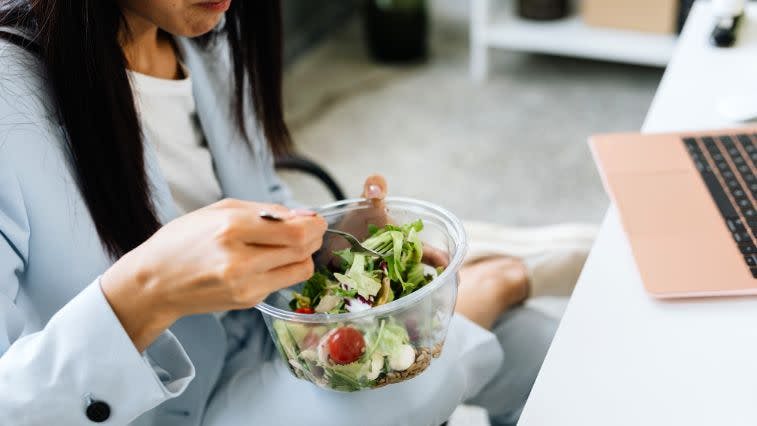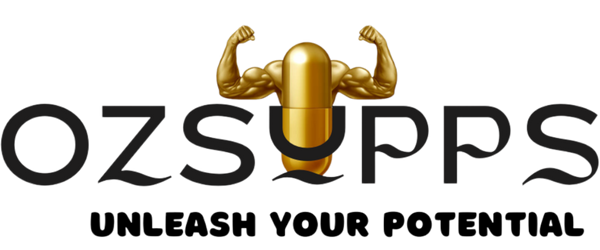Clean eating is simply the act of eating more whole, nutritious foods without a food label. It also involves eating less processed or refined foods that are not in their original form.
As a registered dietitian, my clients frequently ask me about clean eating and if it’s something they should try. Because clean eating emphasizes many whole foods that are good for you, this is a healthy way of eating that I try to help my clients transition to as much as possible.
Like any eating plan, there are pros and cons to clean eating. Let’s dive into the nitty-gritty of clean eating. You’ll learn how to adopt a cleaner, more wholesome diet that fits your goals and lifestyle.
What Is Clean Eating?
The term “clean eating” can be confusing, and is often thrown around in many different ways. From celebrities to influencers to true nutrition experts, it seems everyone has their own unique definition of clean eating or their own personal reasons for following it.
So what is it really and why is it so popular?
At its core, clean eating is a dietary approach that emphasizes whole, minimally processed foods, and discourages processed and refined foods.
Processed and refined foods are widespread in our food supply and include anything with a food label; an example is refined “simple” carbs like white bread, muffins, bagels, or donuts.
While all processed foods are considered “unclean,” it’s especially recommended to steer clear of products with added ingredients like artificial sweeteners, additives, and preservatives.
However, the problem with the clean eating no-processed-foods rule is that many foods are processed — and some of them are actually healthy foods. In other words, processed does not always equal “bad” in terms of a food’s health profile and nutritional value.
For example, whole grain bread such as Ezekiel bread, olive oil, and canned beans are all technically processed in some way, but these are still healthy, nutritious options.
It’s ultra-processed foods that I recommend limiting. These foods, such as potato chips, cookies, donuts, fast food, and sweetened yogurt, lack nutritional value and are associated with negative health outcomes.
While I do encourage my clients to eat more whole foods whenever possible, completely avoiding all processed foods is not necessary (nor realistic in most cases). In my experience, my most successful clients reach for whole foods more often but still include nutrient-dense processed foods when needed.
This balance of the two increases the likelihood of sustainable weight loss, satisfaction with meals, and improved overall well-being.
Foods to Eat

There are many wholesome foods encouraged on an eating clean food list. Here is a grocery list to get you started on your clean eating path.
-
Vegetables: All vegetables are encouraged, including starchy veggies like potatoes, corn, or squash. But, it’s best to eat more non-starchy vegetables for weight loss, as they are naturally lower in calories.
-
Fruits: All fruits are allowed, but fresh fruit is preferred over canned or frozen. If you buy canned fruit, choose fruit packed in water or its own fruit juice versus syrup, as it contains less added sugar (a discouraged ingredient on a clean eating plan).
-
Lean proteins: Eat plenty of natural protein sources like fish, turkey, chicken, eggs, plain Greek yogurt, and low-fat dairy (which is lower in saturated fat).
-
Whole grains: These are grains in their original, high-fiber form such as whole-wheat bread, barley, quinoa, and oats.
-
Healthy fats: Includes fatty fish like salmon, tuna, and sardines as well as avocados, olives, and olive oil.
-
Nuts, nut butter, and seeds: All raw, salted, or unsalted nuts and seeds are encouraged for their healthy fat, vitamin, and plant protein content. Honey-roasted nuts or other sweetened nuts are discouraged due to the added sugar content. If you have peanut butter or almond butter, look for the “natural” varieties that only contain nuts and salt.
-
Legumes: This includes all beans and lentils. Both dried or canned options are allowed, as canned legumes do not contain unhealthful ingredients.
In general, other than legumes and nuts, most of these foods are found in the perimeter of the grocery store.
Foods to Limit
There are various clean eating rules out there, with some clean eating plans being more strict than others. In general, there are four categories of foods or nutrients to limit on a clean eating diet.
Processed foods
This includes all packaged foods in the middle aisles of the store, as these can contain saturated and trans fats, added sugar, artificial ingredients, preservatives, and additives.
While this is the No.1 rule of clean eating, I don’t completely agree with it. Some packaged foods rank poorly in terms of nutrition, but not all packaged foods are bad for you. There are nutritious packaged food options such as certain whole-grain cereals, low-sugar protein bars, and popcorn (popped with olive oil), which are rich in fiber, protein, vitamins, and minerals.
The moral of the story: All packaged foods shouldn't be demonized.
Refined foods
Includes carbs like white bread, bagels, and muffins, as they are stripped of their nutrients and are more processed. Genetically modified and highly processed oils like soybean oil, canola, corn, vegetable oil, palm oil, and others are also discouraged due to their potential link to increased inflammation, neurological disorders, obesity, and diabetes.
Saturated fat
Any food high in saturated fat, whether packaged or in whole form, is discouraged, as too much may increase heart disease risk. Foods high in saturated fat include beef, lamb, bacon, sausage, full-fat dairy, and fried or fast food.
However, some newer research studies show no association between saturated fat and heart disease risk.
While the final verdict on saturated fat is still out, it’s likely best to be cautious and replace the majority of your intake of saturated fat with mono- and polyunsaturated fats from fatty fish, avocados, nuts, and olive oil.
Added sugar
Products containing added sugar such as sweetened breakfast cereals, flavored yogurt, granola bars, pop tarts, juice, soda, and flavored coffees or lattes are discouraged as much as possible. This is because too much added sugar, especially from sugar-sweetened beverages, is strongly associated with chronic disease risk and weight gain.
If you’re eating many of these sugar-laden foods right now, you can slowly swap them out for healthier versions one week at a time. It may take a little time for your taste buds to adjust to whole foods that are lower in salt and sugar, but rest assured — they will adapt.
One of my clients is a self-proclaimed sugar addict. She slowly phased out foods with added sugar, and now, she doesn’t even crave them anymore. She started by paying closer attention to the added sugar on food labels, with the goal of having less than 20 grams per day, then 10 grams, then 5.
For reference, the latest Dietary Guidelines for Americans recommends limiting your added sugar intake to 50 grams or less each day for a 2,000-calorie diet. However, the American Heart Association recommends going lower to curb weight gain and protect the heart — they advise a daily limit of 24 grams of sugar for women and 36 grams of sugar for men.
My client satisfied her sweet tooth by replacing many of these sweetened foods and drinks with healthier alternatives. For beverages, she switched to flavored water, seltzer, or water flavored with lemon or fruit. For food, she ate more fruit, like berries. Both of these swaps helped ease the transition while she was slowly phasing out highly processed sweets.
After a few weeks, her taste buds started to adjust to a lower level of sweetness. As long as she was eating regularly, she didn’t crave added sugar anymore. Now, when she has those foods, she finds them too sweet because she’s no longer used to them. This is a common response I see when cutting out sugar. As long as you’re patient with the process, it does get easier!
When it comes down to it, I recommend going as low as possible with your added sugar intake, and reserving your daily allotment for the foods you really want. For example, if you love a cookie every night after dinner but don’t care about a sweetened latte in the morning, don’t waste your sugar budget on the latte.
Benefits of Clean Eating

There are several other health benefits of clean eating such as:
-
Improved nutrient intake: Whole foods are typically more nutritious than their highly processed counterparts, as they retain their nutrients in their original form.
-
Gut health: Clean eating can support a healthy gut, as whole foods are in a form that your body recognizes as fuel. Many of the ingredients packaged into highly processed foods, like artificial sweeteners, are foreign to our digestive system, which can alter our gut bacteria negatively and result in digestive upset.
-
Weight management: Eating more whole foods is associated with weight loss. This is likely due to the fact that whole foods are more nutrient-dense, satisfying, and lower in sugar; all three characteristics support a healthy weight.
-
Reduced chronic disease risk: Eating more whole and minimally processed foods is associated with better health overall and a reduced chronic disease risk, due to their nutritional value.
-
Improved energy: Eating more whole foods can result in more steady energy throughout the day. If you’re constantly feeling sluggish, eating more whole foods can give you that longer-lasting energy you’re looking for. This is because whole foods tend to be higher in nutrients such as fiber and protein, which slow down the digestive process and keep you full and energized for longer.
When my clients transition to eating more whole foods, they often see an almost immediate increase in their energy and focus.
As a weight loss specialist, I know that processed foods can leave you intensely hangry. Switching to whole-food versions of your favorite foods leads to more satisfaction and steadier energy levels (for instance, instead of salted processed chips, switch to lightly salted nuts).
Downsides of Clean Eating
While clean eating is generally a healthy strategy, it can also be taken too far.
With that said, it’s important to do a thorough self-assessment of any diet plan you’re considering — including clean eating, to determine if it’s a good match for you.
There are three potential downsides of clean eating to consider:
1.Can be time-consuming
Following a clean eating plan means you’ll have to make all your food from scratch. While this is the ideal way to eat, it may be challenging if you have a very busy schedule or limited cooking equipment. Buying pre-chopped foods or meal prepping ahead can make it more feasible if you’re really determined to stick to it.
2.Can trigger eating disorders
Clean eating has a lot of rules, and this can lead to guilt or shame if you can’t follow them perfectly. If you have a history of an eating disorder or have obsessive thoughts around food, clean eating is probably not a good fit for you.
Even if you don’t have an eating disorder history, having to follow so many rules can lead to a condition called orthorexia, an obsession with healthy eating.
There is such a thing as overdoing it on healthy eating, and if negative thoughts are coming up, it’s best to find a more balanced plan that does not demonize any foods.
3.Not always budget-friendly
Eating clean can be expensive, as it requires you to purchase more ingredients to make your meals from scratch. There are ways to eat clean on a budget, however, such as buying what’s on sale, shopping in bulk, and choosing seasonal produce.
Sample 1-Day Clean Eating Meal Plan
If you want to try clean eating, here is a one-day clean eating meal plan for beginners to get you started.
Breakfast: Plain Greek yogurt with mixed berries and sliced almonds
Snack: Apple slices with natural peanut butter
Lunch: Mixed greens with grilled chicken, avocado, cherry tomatoes, and balsamic vinaigrette
Snack: Carrot and cucumber slices with hummus
Dinner: Grilled salmon with roasted broccoli and sweet potatoes
If you’re eating out, choose simple meals with less added sauces and salt, such as fish with lemon, grilled chicken, or a nourishing salad with protein.
